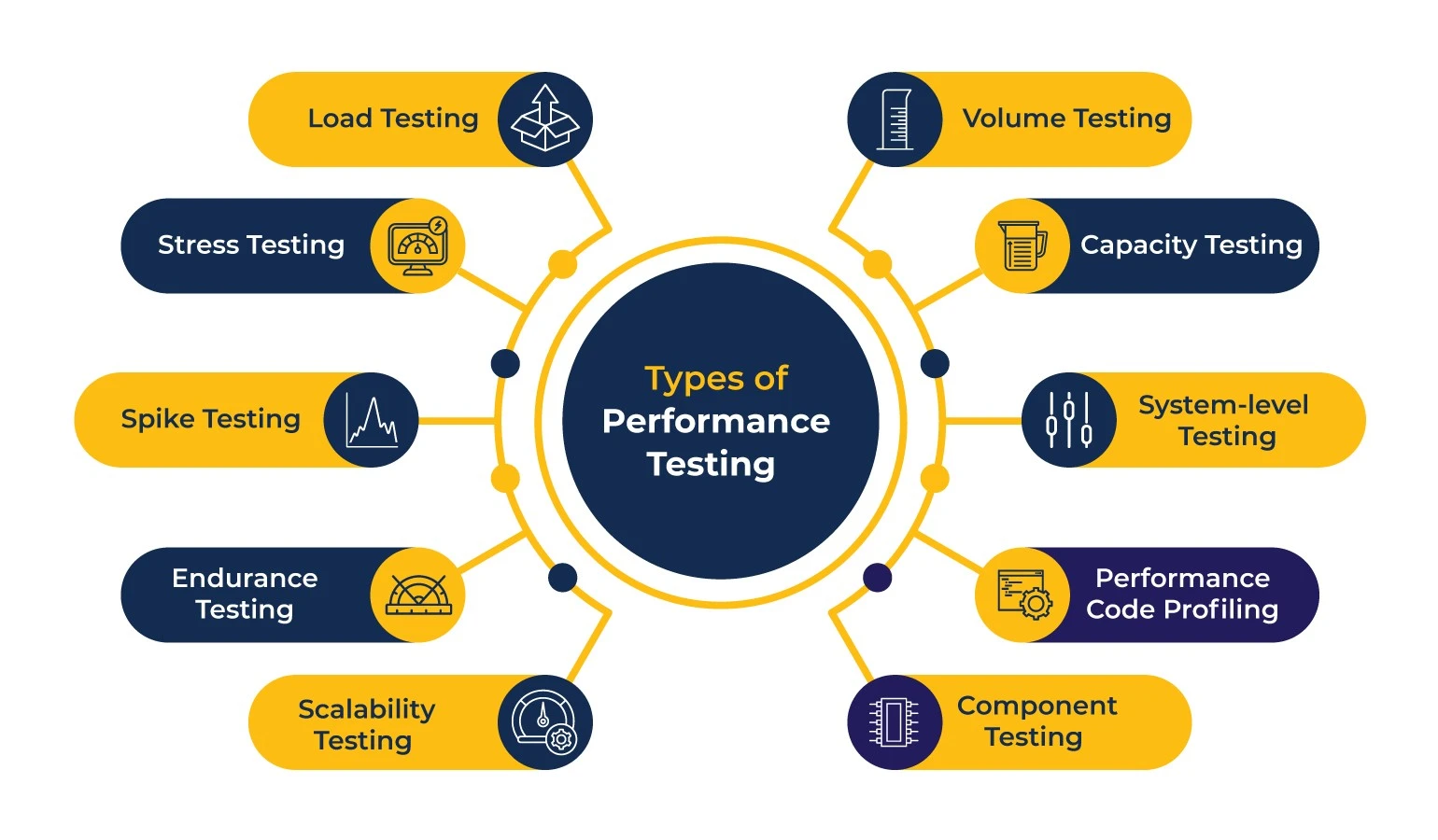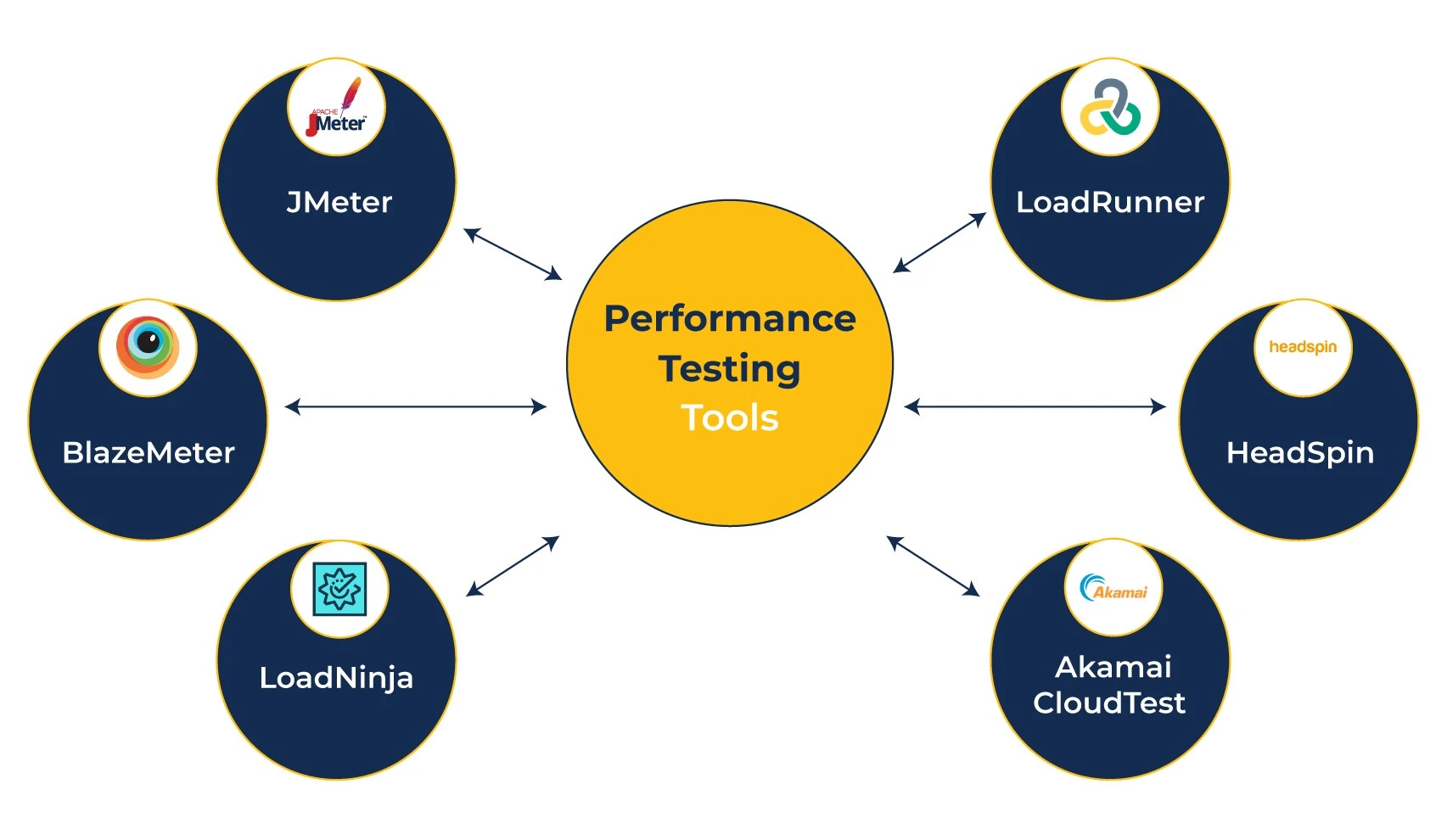The ongoing digital transformation wave is pushing companies worldwide to establish a presence in the digital space. As the number of internet users dramatically increases, the need to develop highly performant web and mobile applications is also rising in tandem with it. But what ensures your application is high performing? Performance testing. A high-performance application is now a critical element in business success, and performance testing is a sure-shot way to develop and deliver a good application.
This article discusses the importance of performance testing, its various types, and its tools.
What is Performance Testing?
Performance testing is a non-functional testing technique designed to analyze the readiness of an application. It is the practice of evaluating how a system behaves under a particular workload in terms of performance and stability.
Performance testing is ideally done by accumulating the tests to examine the system software’s speed, robustness, reliability, scalability, and efficiency. Its primary purpose is to identify, analyze, and eliminate performance bottlenecks in the application.
Effective software testing incorporates various indicators, including the following:
- Response time of browser
- Response time of page
- Response time of network
- Server request processing time
- Stability of the application
- Resource usage
- Processor memory consumption
- Number of acceptable concurrent users
- Errors and issues caught while using the application
The Significance of Performance Testing
Performance testing is undoubtedly critical to successful business operations and smooth end-user experience. Functionalities, features, and services offered by the software are not the only factors for software to be successful; application performance and response time are also of vital significance. In case performance testing stats are below average, it leads the user to question the reliability of the application, which can have an enormous impact on the business commercially.
Organizations use this testing as a diagnostic aid to allocate computing resources and check for system bottlenecks. Bottlenecks are those points in application software that hold back a system’s performance.
The fastest applications can also perform poorly if the bandwidth is lower than desired. Too many applications running simultaneously or the presence of a corrupted file in the browser can also result in slow data transfer rates. So, performing performance tests on your application before it reaches the end user is critical.
It also helps identify the type and placement of potential performance-related problems causing the application’s lag, crash, or failure. Companies opt for performance testing to ensure the application works as expected under predictable conditions. In some scenarios, merchants claim the applications meet certain criteria and standards as directed by their manufacturers. Performance testing also plays a vital role in verifying the products’ reliability and scalability by testing on multiple devices and platforms under controlled conditions.
Moreover, performance testing unveils the improvement areas before the application reaches the end user. Releasing an application without performance testing can lead to issues like inconsistency, slowness, delay in response, and poor user experience. Similarly, speed and stability issues in an application due to lack of performance testing often result in a bad reputation in the market as expected goals are not met.
Types of Performance Testing
There are different performance testing methods developers and testers use to determine the application’s health. Here are some performance testing techniques used during the software testing lifecycle.

Load Testing
Load testing evaluates a system’s performance ability as concurrent users increase. Load testing helps stakeholders get a better insight into the system’s behavior under a specific load. It also helps the developers and testers to determine the number of users the application can handle smoothly.
Stress Testing
Stress testing is performed under extreme workloads; these workloads are higher than expected and are used to observe the system’s response. It is mainly done to spot the point where the application fails or crashes. Stress testing also helps developers determine the application’s stability when the load exceeds its capacity.
Spike Testing
Spike testing is one of the stress testing types where there is a significant increase in the workload simultaneously and repeatedly. In order to evaluate application behavior with abrupt and drastically increasing traffic, spike testing is performed. It is usually done before a large event.
Soak Testing
Soak testing, also known as endurance testing, evaluates the system’s performance for expected workload for longer time periods. This is done to analyze resources such as memory consumption, shortages, and failure checkpoints. It also gauges the system stability and response time.
Scalability Testing
Scalability testing determines the application performance by gradually increasing the user load and monitoring the system behavior. The increasing number of users on a stable application helps analyze its effectiveness.
Volume Testing
Volume testing is also known as flood testing, where you populate a database with a huge number of data and then observe and track the system’s behavior to analyze application performance.
Performance Testing Challenges
Developers and testers often look for performance-related symptoms and issues at different stages before and after the release of the application. Speed issues, slow and delayed response, long load times, operating system limitations, memory and disk utilization, inefficient hardware resources, scalability issues, etc., are the most common performance challenges developers face.
Response Time
The load and response times of the application are vital for evaluating its performance. Longer load times to start an application and poor response time after getting user input can result in loss of users, bad word of mouth, and a declining reputation in the market.
Response and load times should ideally be quick and process fast; otherwise, if a user has to wait longer than expected, they will lose interest and look for alternate applications to get the job done.
Scalability
Scalability problems in software arise when it cannot manage the expected number of concurrent users or workload. You should perform load testing with ranging datasets to avoid scalability issues. Such issues can result in delayed results, application crashes, or some other unexpected application behavior.
Bottlenecking
A bottleneck occurs when data flow is chipped in or halted due to the lack of capacity to handle the workload. Bottlenecks are the blockers that degrade system performance, mainly due to coding errors or hardware issues under certain loads.
You can resolve bottlenecks by finding the faulty piece of code that causes the system to slow down. Running processes or the upgradation of hardware can improve performance in such cases. Some common performance bottlenecks include CPU utilization, memory utilization, network utilization, disk usage, and operating system limitations.
Tools Limitation
Tools used for performance testing and to ensure the fast running of the application can also emerge as challenges in some scenarios. Certain tools only support web applications. As a result, you may require expertise in multiple tools to conduct performance testing of mobile applications.
Moreover, free variants of performance testing tools are not efficient. They can have compatibility issues at times, and some paid tools are quite expensive, which can result in more utilization of resources. However, it can be difficult to cover various scenarios in the case of complex applications.
Performance Testing Tools
There is a wide range of performance testing tools available out there, each having its own preferences and protocols. The tool selection depends on various factors, like parameters to measure, license cost, hardware requirements, platform, operating system support, etc.
Here are some of the popular performance testing tools.

JMeter
JMeter is a leading performance and load-testing tool for web and application servers. The tool can generate load tests for several applications. The Apache JMeter plugin offers flexibility in load and stress testing, covering results in tables and graphs. Thread groups, timers, functions, and logic controllers are among its popular features.
BlazeMeter
BlazeMeter can simulate a variety of test cases and helps in performance testing directly from your IDE (integrated development environment). It provides performance, functional, and scriptless API testing, in addition to monitoring, UX, and load testing capabilities with open-source tools. BlazeMeter also features testing for mobile and mainframe applications by providing real-time reporting and analytics.
LoadNinja
LoadNinja is a remarkable tool and has upgraded the load testing methodologies. Testers can record and instantly playback comprehensive load tests in real browsers by utilizing this cloud-based load testing tool. It also helps increase the test coverage by drastically cutting the load testing time.
LoadRunner
LoadRunner is among the most popular performance testing tools available in the market. It can simulate millions of users by making real-life scenarios for applications under test. LoadRunner also has a feature of generating virtual users that simulate the actions of real-time users.
HeadSpin
HeadSpin, as per its features, is considered among the top-performing testing tool in the industry. It offers the users excellent performance testing experiences of identifying and resolving performance-related problems across the application, devices, and networks.
The tool facilitates testers with real-world data by removing inconsistencies and ambiguities from the devices, locations, and networks. The advanced AI capabilities of HeadSpin can automate the identification of performance-related issues so you can prevent their occurrence before the app reaches end users.
Akamai CloudTest
Akamai CloudTest is a functional and performance testing tool commonly used for web and mobile applications. This tool can simulate several thousands of coinciding workloads for load testing. It has customizable dashboards and can stress test on AWS, Microsoft Azure, and other clouds. Moreover, it has a visual playback editor and can also create visual tests.
Conclusion
In the 21st century, business success will largely depend on a company’s ability to leverage the latest tools and technologies, including having a sound digital strategy. This includes building a robust digital presence through a website, mobile application, etc. Whether you want to build a lightweight, scalable mobile application or a website that surpasses user expectations, performance testing is going to be crucial.
Look no further if you’re looking for SQA (software quality assurance) services. Xavor has been in the tech industry for over 27 years, serving startups and F500s alike. Drop us a line at [email protected] to book a free consultation session with our team.

